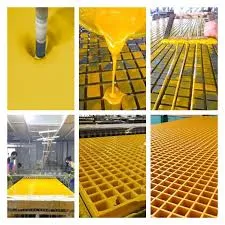
-
 Afrikaans
Afrikaans -
 Albanian
Albanian -
 Amharic
Amharic -
 Arabic
Arabic -
 Armenian
Armenian -
 Azerbaijani
Azerbaijani -
 Basque
Basque -
 Belarusian
Belarusian -
 Bengali
Bengali -
 Bosnian
Bosnian -
 Bulgarian
Bulgarian -
 Catalan
Catalan -
 Cebuano
Cebuano -
 China
China -
 China (Taiwan)
China (Taiwan) -
 Corsican
Corsican -
 Croatian
Croatian -
 Czech
Czech -
 Danish
Danish -
 Dutch
Dutch -
 English
English -
 Esperanto
Esperanto -
 Estonian
Estonian -
 Finnish
Finnish -
 French
French -
 Frisian
Frisian -
 Galician
Galician -
 Georgian
Georgian -
 German
German -
 Greek
Greek -
 Gujarati
Gujarati -
 Haitian Creole
Haitian Creole -
 hausa
hausa -
 hawaiian
hawaiian -
 Hebrew
Hebrew -
 Hindi
Hindi -
 Miao
Miao -
 Hungarian
Hungarian -
 Icelandic
Icelandic -
 igbo
igbo -
 Indonesian
Indonesian -
 irish
irish -
 Italian
Italian -
 Japanese
Japanese -
 Javanese
Javanese -
 Kannada
Kannada -
 kazakh
kazakh -
 Khmer
Khmer -
 Rwandese
Rwandese -
 Korean
Korean -
 Kurdish
Kurdish -
 Kyrgyz
Kyrgyz -
 Lao
Lao -
 Latin
Latin -
 Latvian
Latvian -
 Lithuanian
Lithuanian -
 Luxembourgish
Luxembourgish -
 Macedonian
Macedonian -
 Malgashi
Malgashi -
 Malay
Malay -
 Malayalam
Malayalam -
 Maltese
Maltese -
 Maori
Maori -
 Marathi
Marathi -
 Mongolian
Mongolian -
 Myanmar
Myanmar -
 Nepali
Nepali -
 Norwegian
Norwegian -
 Norwegian
Norwegian -
 Occitan
Occitan -
 Pashto
Pashto -
 Persian
Persian -
 Polish
Polish -
 Portuguese
Portuguese -
 Punjabi
Punjabi -
 Romanian
Romanian -
 Russian
Russian -
 Samoan
Samoan -
 Scottish Gaelic
Scottish Gaelic -
 Serbian
Serbian -
 Sesotho
Sesotho -
 Shona
Shona -
 Sindhi
Sindhi -
 Sinhala
Sinhala -
 Slovak
Slovak -
 Slovenian
Slovenian -
 Somali
Somali -
 Spanish
Spanish -
 Sundanese
Sundanese -
 Swahili
Swahili -
 Swedish
Swedish -
 Tagalog
Tagalog -
 Tajik
Tajik -
 Tamil
Tamil -
 Tatar
Tatar -
 Telugu
Telugu -
 Thai
Thai -
 Turkish
Turkish -
 Turkmen
Turkmen -
 Ukrainian
Ukrainian -
 Urdu
Urdu -
 Uighur
Uighur -
 Uzbek
Uzbek -
 Vietnamese
Vietnamese -
 Welsh
Welsh -
 Bantu
Bantu -
 Yiddish
Yiddish -
 Yoruba
Yoruba -
 Zulu
Zulu
sewage treatment fiberglass
Sewage Treatment and the Role of Fiberglass
Sewage treatment is a critical process in managing wastewater and protecting the environment. As urbanization increases and populations grow, the need for effective sewage treatment becomes more pressing. Traditional materials used in wastewater treatment facilities, such as concrete and steel, have their limitations. In recent years, fiberglass has emerged as a preferred option due to its unique properties that enhance the efficiency and longevity of sewage treatment systems.
Fiberglass, or glass-reinforced plastic (GRP), is composed of a polymer matrix reinforced with glass fibers. This composition endows fiberglass with a remarkable strength-to-weight ratio, making it much lighter than concrete and steel while still being highly durable. One of the primary advantages of using fiberglass in sewage treatment facilities is its resistance to corrosion. Unlike metal and concrete, fiberglass does not rust or deteriorate when exposed to harsh chemicals commonly found in sewage, thereby extending the lifespan of treatment equipment.
Sewage Treatment and the Role of Fiberglass
In addition to its durability and low maintenance requirements, fiberglass is also highly versatile in design. Manufacturers can mold fiberglass into various shapes and sizes, allowing for customizable solutions that fit the specific needs of different treatment plants. This flexibility enables engineers to optimize the design of treatment systems, ensuring maximum efficiency in handling varying wastewater volumes.
sewage treatment fiberglass

Furthermore, fiberglass is lightweight, facilitating easier transportation and installation. This characteristic is particularly advantageous in remote or challenging locations where large, heavy equipment may be difficult to maneuver. The reduced transportation costs associated with fiberglass also make it a more economical choice for wastewater treatment projects.
Environmental concerns are at the forefront of sewage treatment, and fiberglass contributes to sustainable practices in this area. With its long service life and minimal impact on the ecosystem, fiberglass supports the creation of greener sewage treatment facilities. Moreover, as industries increasingly adopt recycled materials in fiberglass production, its ecological footprint continues to decrease. This aspect aligns well with global sustainability goals, as communities strive to balance urban development with environmental preservation.
The integration of fiberglass into sewage treatment systems represents a significant advancement in this essential field. Its benefits, ranging from durability and corrosion resistance to cost-effectiveness and environmental sustainability, make it an attractive option for modern wastewater management. As technology continues to evolve, the adoption of innovative materials like fiberglass will likely play a pivotal role in enhancing the effectiveness and efficiency of sewage treatment processes worldwide.
In conclusion, fiberglass has emerged as a key material in sewage treatment, offering various advantages that improve the service and longevity of wastewater facilities. As we face growing challenges in managing sewage due to urban population growth, the importance of materials that deliver reliability and efficiency, like fiberglass, becomes ever more critical. By embracing such innovative materials, we can ensure a healthier environment and a sustainable future.
Latest news
-
Exploring the Benefits of Top Hammer Drifter Rods for Enhanced Drilling PerformanceNewsJun.10,2025
-
High-Precision Fiberglass Winding Machine for GRP/FRP Pipe Production – Reliable & Efficient SolutionsNewsJun.10,2025
-
FRP Pipes & Fittings for Shipbuilding - Corrosion-Resistant & LightweightNewsJun.09,2025
-
Premium FRP Flooring Solutions Durable & Slip-ResistantNewsJun.09,2025
-
Premium Fiberglass Rectangular Tanks Durable & Lightweight SolutionNewsJun.09,2025
-
Tapered Drill String Design Guide Durable Performance & UsesNewsJun.09,2025









